Once thought of as the building material of the poor, bamboo is now being used more prominently in all types of architecture the world over. Being one of the strongest materials on the planet and one of the fastest-growing plants in the world, bamboo is used in structures ranging from pavilions to tree mosques.
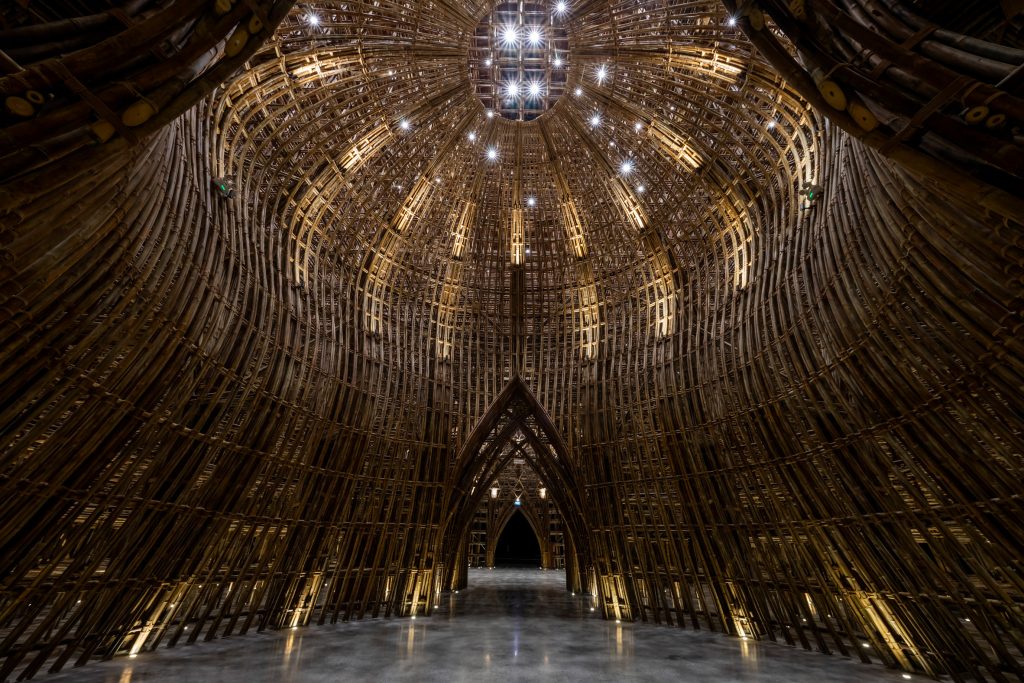
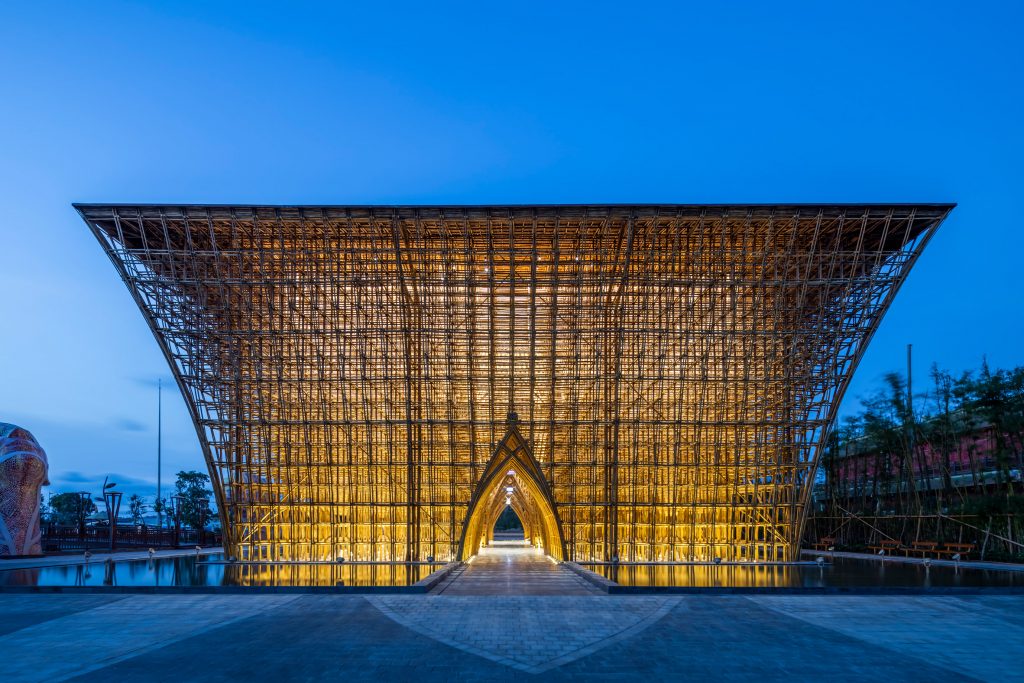
Grand World Phu Quoc by Vo Trong Nghia Architects (also header image)
Vietnamese architect Vo Trong Nghia, founder of the eponymous studio, described bamboo, which is abundant and affordable in his native country, as the “green steel of the 21st century.” The architects used approximately 42,000 bamboo culms – the hollow stems of the grass species – to create an entrance building for Phu Quoc United Center, a large leisure and entertainment complex situated on the Vietnamese island of Phu Quoc.
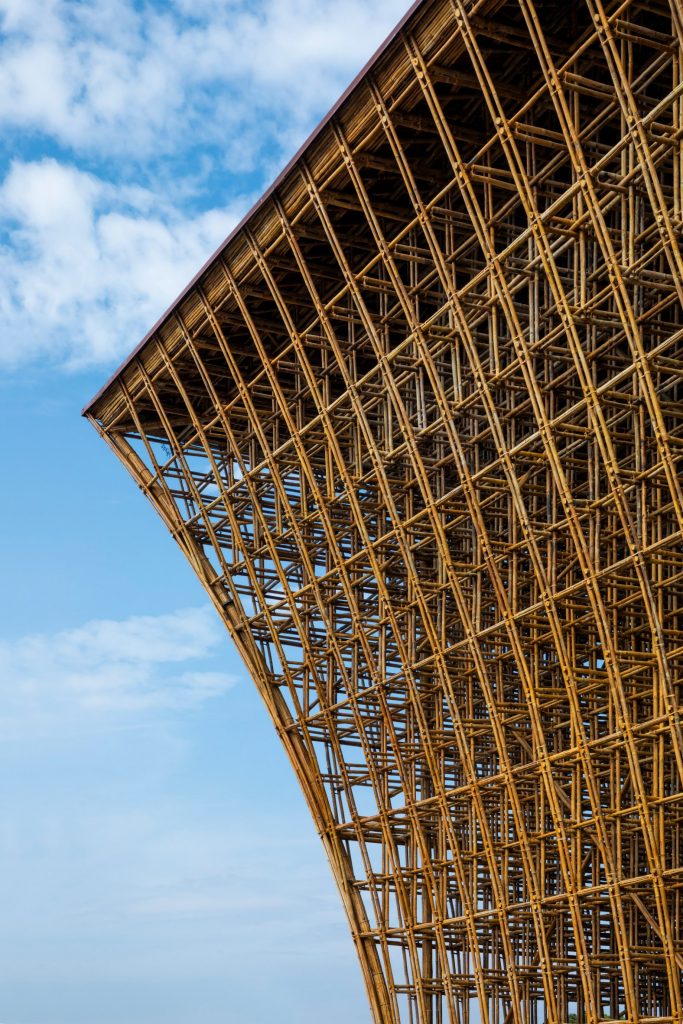
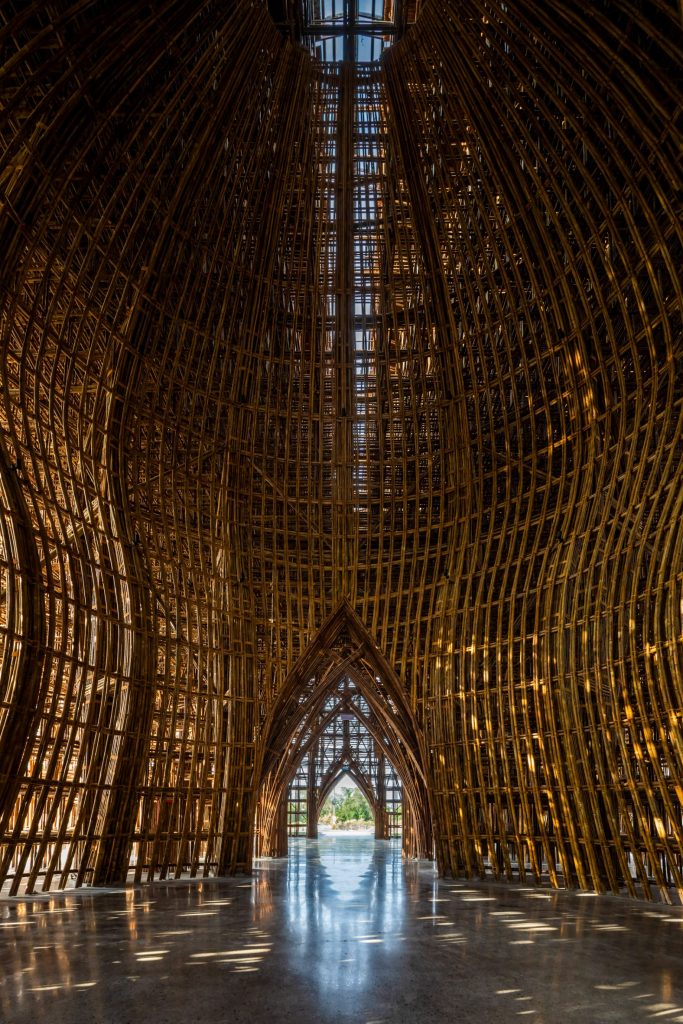
Grand World Phu Quoc by Vo Trong Nghia Architects
The construction method developed by the practice involves using ropes and bamboo pins to connect the culms together. The joint system is more complicated than the studio’s previous bamboo buildings due to the hybrid structural systems used. The resulting bamboo framework allows to produce interior spaces that feel open and transparent, due to the grid structure letting light to penetrate through it. Besides, it creates a warm and intimate atmosphere, even though the structure is very open in terms of airflow.
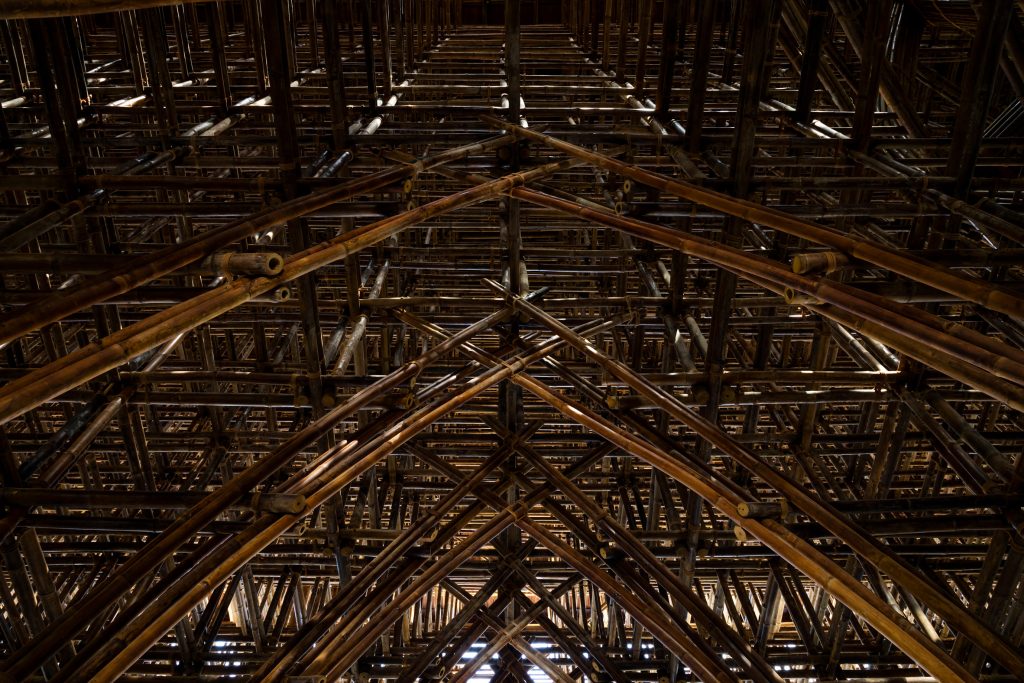
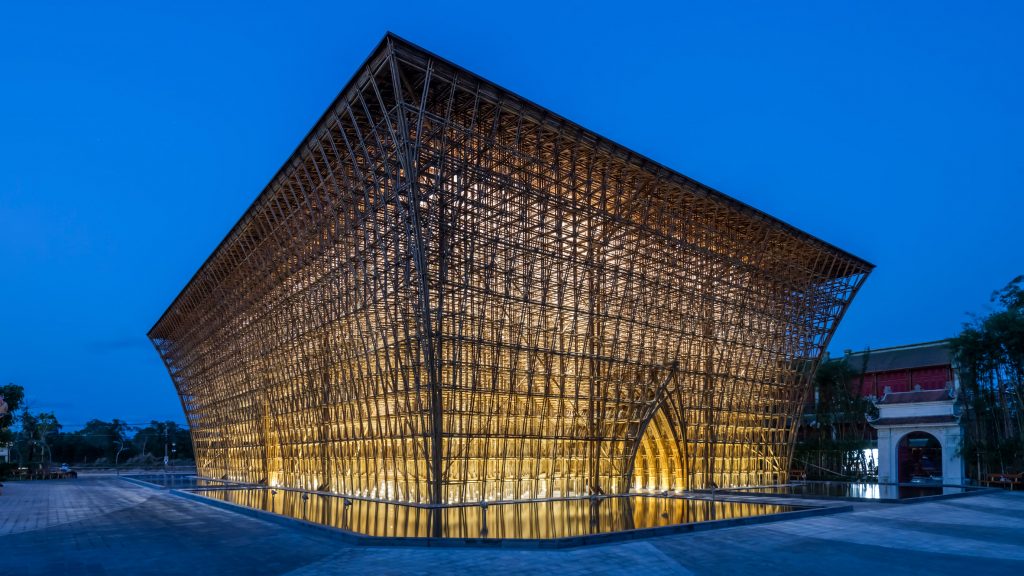
Grand World Phu Quoc by Vo Trong Nghia Architects
The structure consists of a series of arches, domes and grids. The arched passage extends through the building, leading into two halls that are shaped like a lotus and a bronze drum. These sculpted internal voids represent traditional Vietnamese symbols that meet the client’s requirement that the building should embody Vietnamese culture.
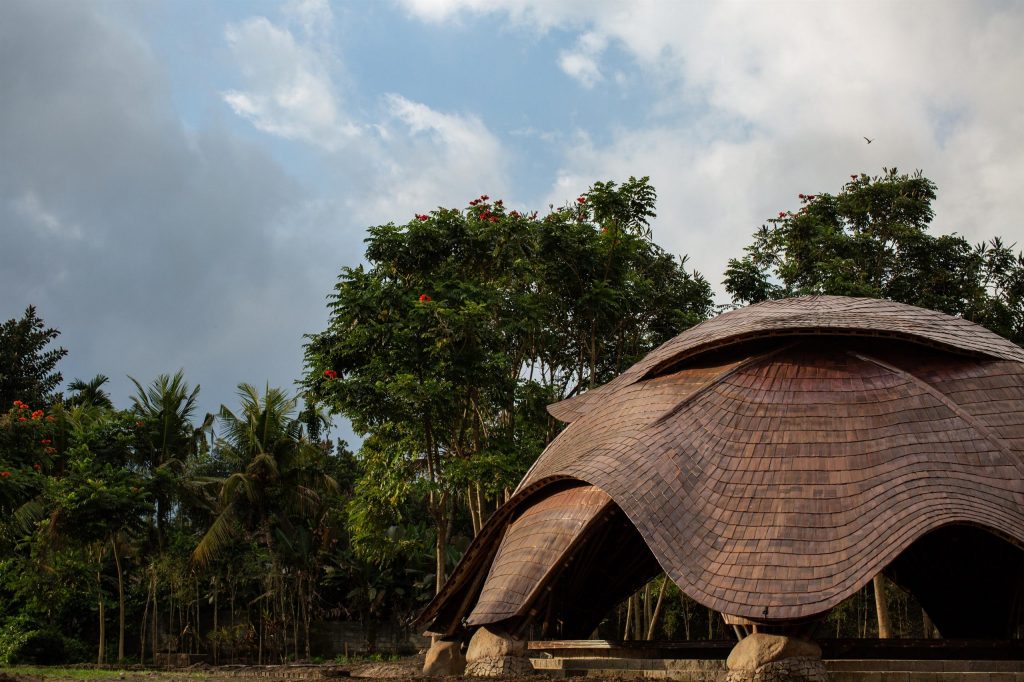
Alchemy Yoga Center by IBUKU
In the heart of Penestanan Ubud in Bali, Indonesia, local architecture practice IBUKU has used bamboo to build the Alchemy Yoga Center. The use of the natural material palette was intentional, staying true to the ideas of the vegan restaurant Alchemy behind the centre. The project comprises two bamboo-built yoga shalas, two bathroom buildings, a shop and reception, as well as various outdoor areas complete with organic permaculture gardens and water features.
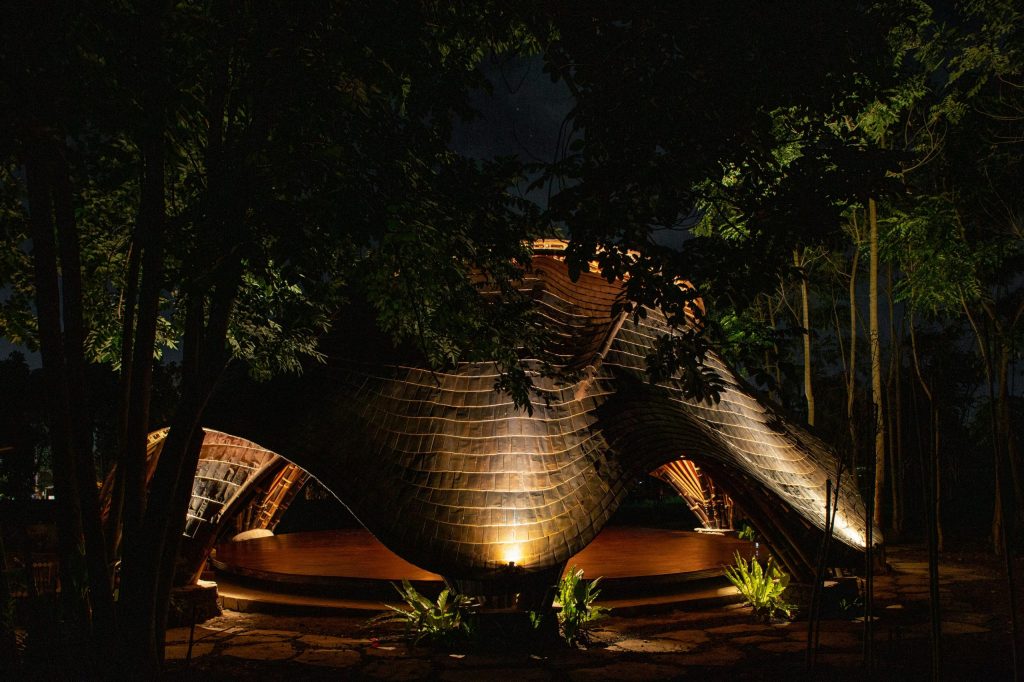
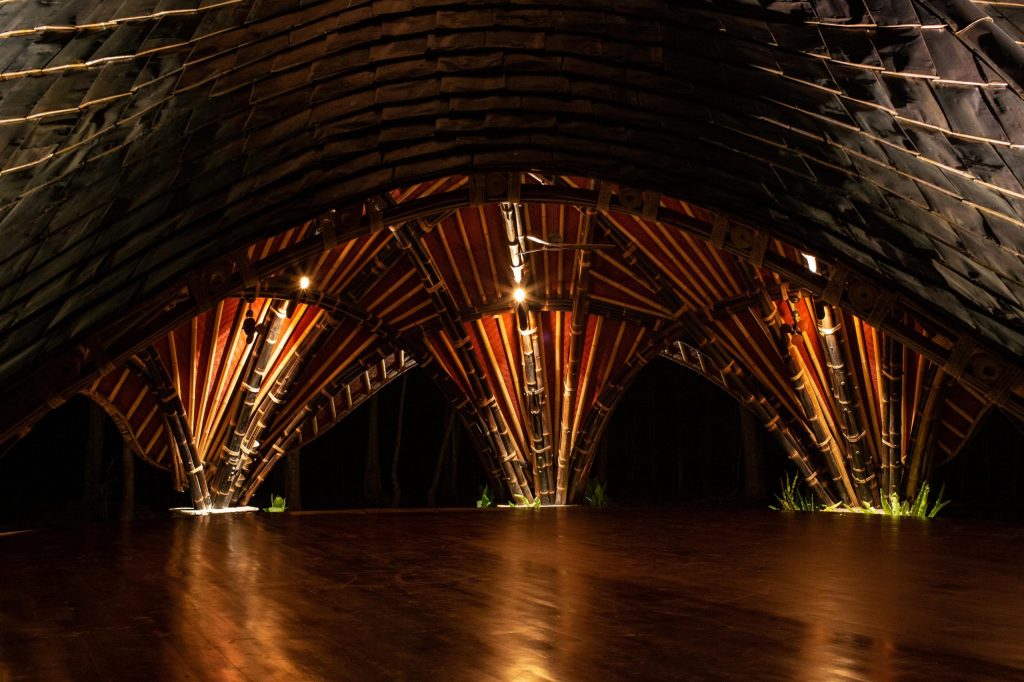
Alchemy Yoga Center by IBUKU
The first of the two shalas is built around the concepts of Tilem, which means new moon in Balinese. The structure features a beautiful black petung bamboo structure, which holds up a dusk red ceiling and a roof that dips low, down to the level of the dark ulin wood floor. There is an intentional lack of directionality in the Tilem shala, to inspire freedom of motion, and the clearing of one’s mind.
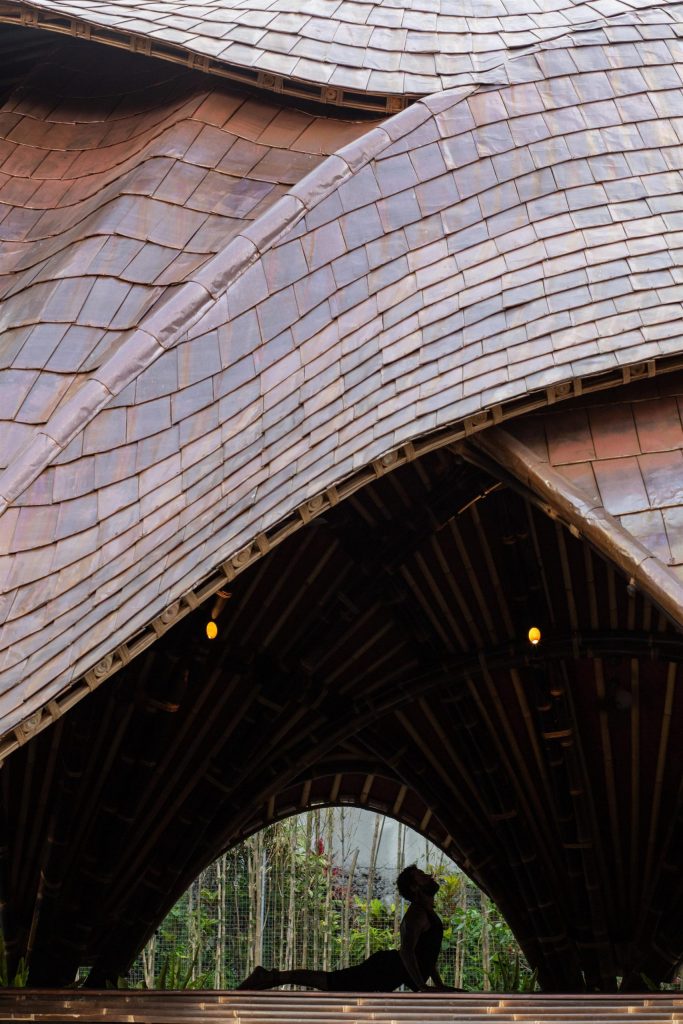
Alchemy Yoga Center by IBUKU
The second shala is named after Purnama, which means full moon. It, on the contrary, is made using a blonde petung bamboo structure and a natural mud floor created using a mixture of limestone, various soils, and clay, and most importantly uses zero cement. The entire floor and all the walls in the Purnama shala use this material, connecting visitors to the earth. Both shalas are clad in hand-made copper shingles.
While the Tilem shala creates an air of quietness and intimacy, the Purnama shala feels inviting, with natural light pouring into the space through the gaps in the roof.
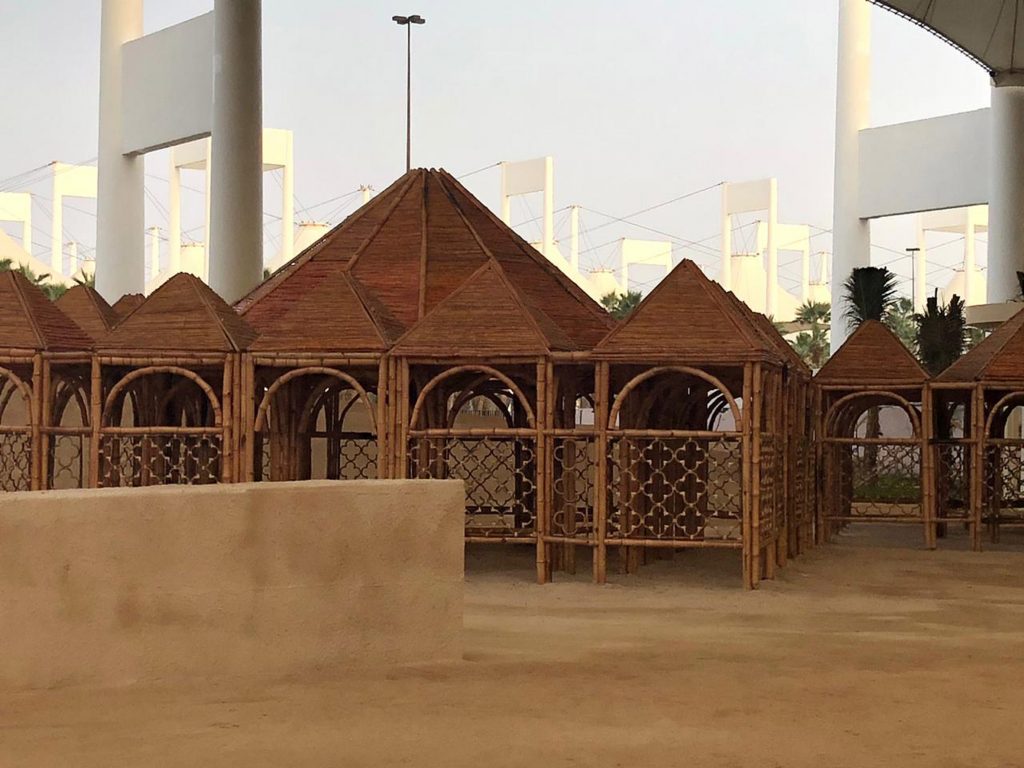
Reusable mosques by Yasmeen Lari
Seeking to demonstrate the potential of bamboo, which a renewable and highly durable material, Pakistani architect Yasmeen Lari has created a trio of pop-up mosques for the Islamic Arts Biennale in Jeddah, Saudi Arabia. The architect was tasked by the biennale’s artistic director Sumayya Vally to design a reusable mosque that could replace permanent structures at building sites.
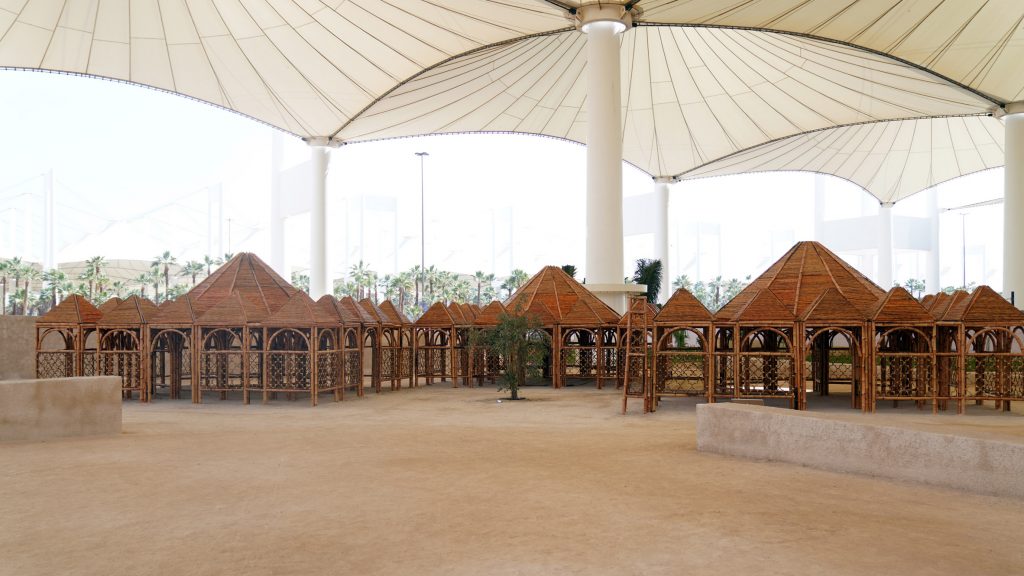
Reusable mosques by Yasmeen Lari
One is not allowed to demolish a mosque once it has been built, so normally mosques of concrete are left to collapse over time. The structure created by Lari can be dismantled and removed to another site once the building crew leave the site.
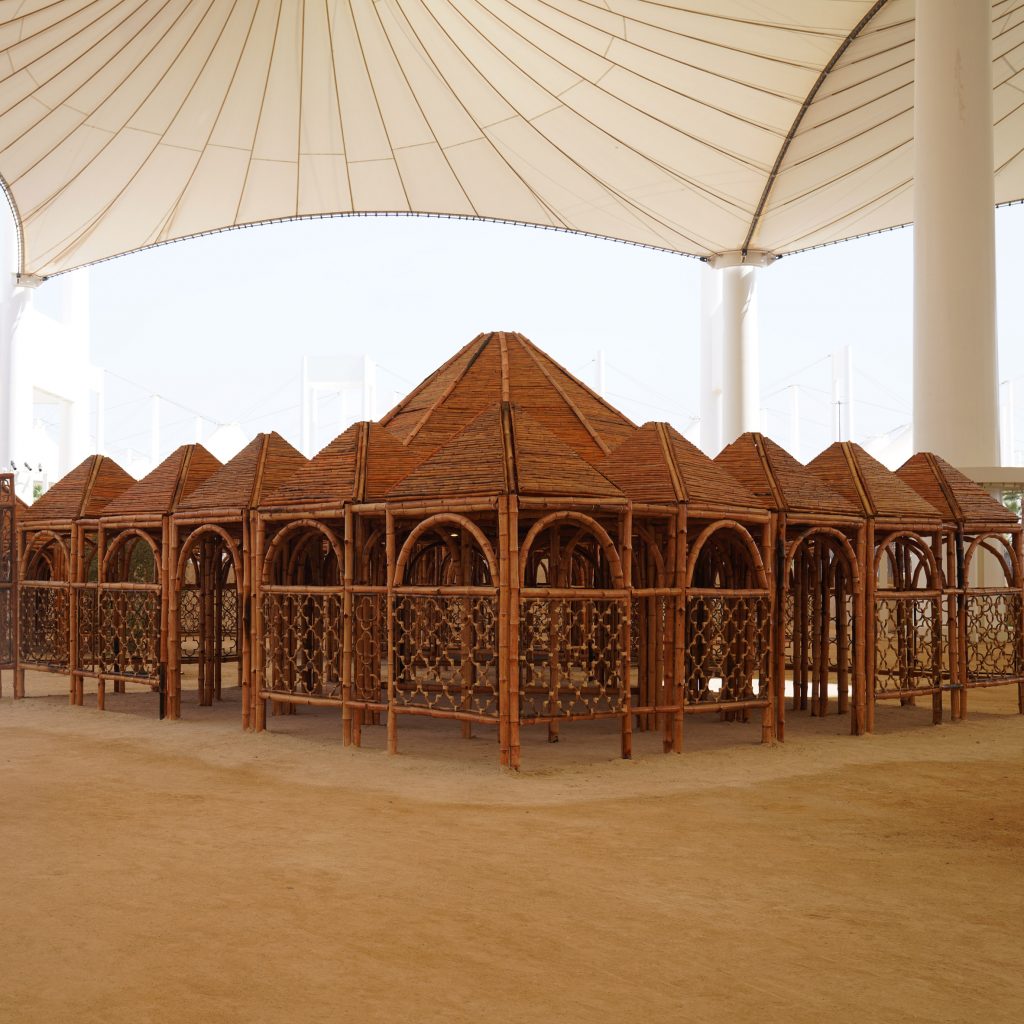
Reusable mosques by Yasmeen Lari
The mosque completed by Lari consists of a central prayer space surrounded by a colonnade topped with dome-like structures, all of which is made entirely of bamboo. The material endows the structure with the quality of authenticity and manages to “expresses the spirit of the past,” even though the building has no external embellishments normally associated with traditional mosques.
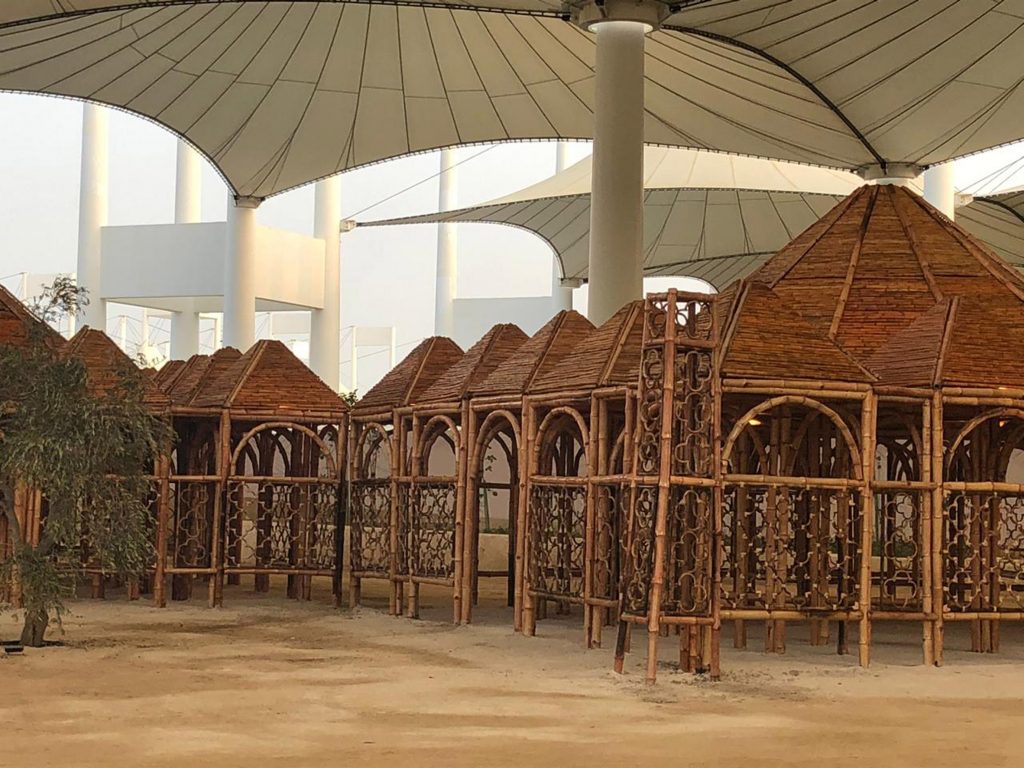
Reusable mosques by Yasmeen Lari
Dismantling and re-erecting mosque buildings would mean re-use of the structures and also curtail waste and avoid unsightly ruined buildings. The architect hopes that the project conveys the future of architecture – an example of what 21st century architecture should be about.